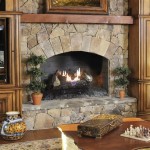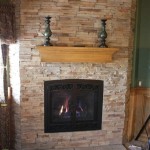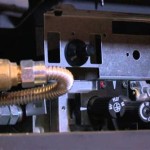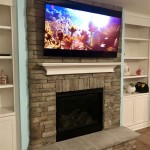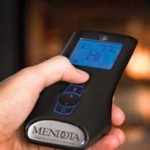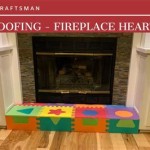Corner Insert Fireplaces: A Comprehensive Guide
Corner insert fireplaces present a compelling option for homeowners seeking to add warmth and ambiance to a room while maximizing space utilization. Unlike traditional fireplaces that require a full wall or a significant portion of a room's floor plan, corner inserts are designed to fit snugly into the periphery, freeing up valuable square footage. This design characteristic makes them particularly well-suited for smaller homes, apartments, or rooms where maximizing space is a priority.
The term "corner insert" refers to a fireplace unit that is specifically engineered to be installed within an existing fireplace opening located in the corner of a room. These inserts typically rely on either gas, electricity, or wood as fuel sources and offer a range of aesthetic styles, heating capabilities, and technological features. Understanding the nuances of corner insert fireplaces allows homeowners to make informed decisions when choosing the right model for their individual needs and preferences.
Before delving into specific types of corner insert fireplaces, it's important to understand the general requirements and considerations for installation. Most corner inserts require an existing fireplace structure, although some electric models can be installed directly into framed corner spaces with appropriate electrical wiring. Proper ventilation is critical for gas and wood-burning inserts to ensure safe and efficient operation. This typically involves connecting the insert to an existing chimney or installing a dedicated venting system. Electrical inserts, on the other hand, primarily require access to a suitable electrical outlet.
The selection of a corner insert fireplace often involves a careful evaluation of room size, heating needs, aesthetic preferences, and budget. Factors such as heat output (measured in BTUs for gas and wood models, or watts for electric models), energy efficiency, flame appearance, and control options play a significant role in the decision-making process.
Fuel Source Options: Gas, Electric, and Wood
Corner insert fireplaces are available in three primary fuel source options: gas, electric, and wood. Each option offers unique advantages and disadvantages that should be carefully considered before making a purchase.
Gas Corner Insert Fireplaces: Gas inserts offer a blend of convenience and efficiency. They provide consistent and controllable heat output, often with the ability to adjust the flame height and heat intensity using a remote control or thermostat. Gas inserts typically burn either natural gas or propane, requiring a connection to a gas line or the use of a propane tank. Installation generally requires professional expertise to ensure proper connections and ventilation. Gas inserts are often favored for their realistic flame appearance and the ability to provide supplemental zone heating quickly and efficiently. However, the cost of gas inserts can be higher than electric models, and ongoing fuel costs need to be factored into the overall equation. The need for venting is also a crucial consideration, as improper venting can lead to dangerous carbon monoxide buildup.
Electric Corner Insert Fireplaces: Electric inserts are known for their ease of installation and versatility. They do not require venting, making them suitable for a wider range of installation locations. Electric inserts operate by converting electrical energy into heat using a heating element. The flame effect is typically created by a combination of lights and mirrors, simulating the appearance of a real fire. While the flame appearance may not be as realistic as a gas or wood-burning fireplace, electric inserts offer a convenient and cost-effective way to add ambiance and supplemental heat to a room. Electric inserts are also available with various features such as adjustable flame colors, brightness settings, and built-in thermostats. The energy efficiency of electric inserts can vary depending on the model and usage patterns, but they generally offer a lower initial cost compared to gas or wood inserts. However, the long-term operating costs can be comparable to gas inserts, depending on electricity rates.
Wood-Burning Corner Insert Fireplaces: Wood-burning inserts provide the classic ambiance and warmth associated with a traditional fireplace. They burn seasoned wood as fuel, offering a natural and rustic aesthetic. Wood-burning inserts typically provide a high heat output and can be a cost-effective heating solution in areas where wood is readily available and affordable. However, wood-burning inserts require more maintenance than gas or electric models, including frequent loading of wood, ash removal, and chimney cleaning. They also require proper ventilation to ensure safe and efficient operation. Wood-burning inserts need to meet stringent emission standards to minimize air pollution. The installation of a wood-burning insert often requires significant modifications to the existing fireplace structure to ensure proper clearances and venting. The overall cost of installing and maintaining a wood-burning insert can be higher than gas or electric models, particularly when factoring in the cost of firewood and chimney maintenance.
Choosing the Right Size and Heat Output
Selecting the appropriate size and heat output for a corner insert fireplace is crucial for ensuring optimal performance and comfort. An undersized insert may not provide sufficient heat for the space, while an oversized insert can lead to overheating and wasted energy. The following factors should be considered when determining the appropriate size and heat output:
Room Size: The size of the room where the insert will be installed is a primary factor in determining the required heat output. A larger room will generally require a higher BTU or wattage rating to effectively heat the space. Manufacturers typically provide guidelines on their products indicating the square footage that the insert can effectively heat. However, these guidelines are often based on ideal conditions, such as well-insulated walls and ceilings, and may need to be adjusted based on the specific characteristics of the room.
Insulation: The level of insulation in the walls, ceilings, and floors of the room can significantly impact the heating requirements. A poorly insulated room will lose heat more quickly, requiring a higher heat output from the insert to maintain a comfortable temperature. It may be worthwhile to upgrade the insulation in the room before installing a corner insert, as this can improve energy efficiency and reduce heating costs. Windows and doors are also significant sources of heat loss, and upgrading to more energy-efficient models can further reduce heating requirements.
Climate: The climate in which the home is located will also influence the required heat output. Homes in colder climates will generally require a higher BTU or wattage rating to effectively heat the space during the winter months. The severity and duration of the cold weather should be taken into consideration when selecting an insert. In milder climates, a smaller insert may be sufficient to provide supplemental heat and ambiance.
Personal Preferences: Individual preferences for temperature and comfort levels should also be considered. Some people prefer a warmer environment, while others prefer a cooler environment. The desired temperature setting should be factored into the calculation of the required heat output. It may be helpful to consult with a heating professional to determine the optimal size and heat output for the specific needs and preferences of the homeowner.
Installation Considerations and Safety Measures
Proper installation and adherence to safety measures are paramount when installing a corner insert fireplace. Improper installation can lead to inefficient operation, safety hazards, and potential damage to the home. The following considerations and safety measures should be observed:
Professional Installation: It is generally recommended to have a qualified professional install gas and wood-burning corner insert fireplaces. These installations often involve complex connections to gas lines, venting systems, and electrical wiring. A professional installer will have the necessary expertise and experience to ensure that the installation is performed safely and correctly. Electric inserts can sometimes be installed by homeowners with basic electrical knowledge, but it is still advisable to consult with a professional to ensure that the electrical wiring is adequate and that the installation complies with local building codes.
Venting Requirements: Gas and wood-burning inserts require proper venting to exhaust combustion gases safely. Gas inserts typically require a dedicated venting system that is specifically designed for gas appliances. Wood-burning inserts require a chimney that is in good condition and meets the required standards for venting wood smoke. The venting system should be inspected and cleaned regularly to prevent blockages and ensure proper airflow. Improper venting can lead to dangerous carbon monoxide buildup, which can be fatal.
Clearances and Fire Safety: It is essential to maintain proper clearances between the corner insert and combustible materials such as walls, furniture, and curtains. Manufacturers typically provide guidelines on the minimum clearances required for their products. These clearances should be strictly adhered to to prevent the risk of fire. A fire extinguisher should be readily accessible in the vicinity of the fireplace, and smoke detectors should be installed on every level of the home.
Carbon Monoxide Detectors: Carbon monoxide is a colorless, odorless, and poisonous gas that can be produced by incomplete combustion of fuels such as gas, wood, or propane. Carbon monoxide detectors should be installed in the home to provide early warning of carbon monoxide buildup. The detectors should be tested regularly to ensure that they are functioning properly. It is also important to educate all household members about the dangers of carbon monoxide poisoning and the symptoms to watch out for.

Discover The 61 Best Corner Fireplace Designs In 2024 Stone Gas

Flex 68lc Bx2 Left Corner Fireplace Insert Ecosmart Fire

Flex 50rc Bxr Right Corner Fireplace Insert Ecosmart Fire

Are There Inserts For L Shaped Corner Fireplaces

Corner Fireplace Insert Visio 2 L Attika Feuer Ag Wood Burning Steel Contemporary

Superior Wct40cr L Wood Burning Corner Fireplace Woodlanddirect Com Indoor Fireplaces Gas Sup Design Stone

Fireplaceinsert Com Vantage Hearth Corner Wood Fireplace

3 Sided Fireplace Insert Instyle Ea Dik Geurts Double Corner Wood Burning

Result For Corner Insert Gas Fireplace Design Stone

Lx2 Corner Gas Fireplace Right Natural The Center
Related Posts

